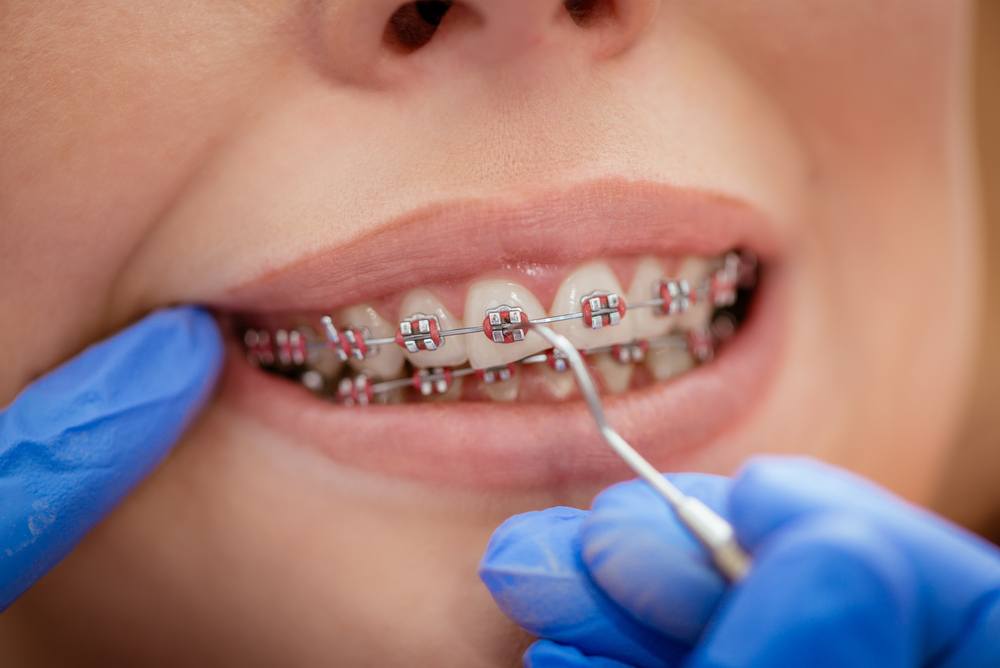Discovering the Right Cumming Orthodontist for Your Braces and Aligners Needs
Discovering the Right Cumming Orthodontist for Your Braces and Aligners Needs
Blog Article
Comprehensive Guide to Orthodontics Procedures for Dealing With Dental Imbalances
Recognizing the complexities of each treatment, including their devices, benefits, and potential disadvantages, is critical in making informed choices concerning one's orthodontic therapy. As we browse through the thorough guide to orthodontic procedures for fixing dental imbalances, the elaborate information of each method will certainly unfold, losing light on the path toward a useful and harmonious dental positioning.
Orthodontic Procedures Introduction

In addition to typical dental braces and clear aligners, orthodontists might likewise advise various other interventions like headwear, palatal expanders, or retainers to resolve certain placement issues (orthodontics). These procedures are tailored to every person's one-of-a-kind requirements and may involve a mix of therapies to achieve the wanted outcomes. Routine changes and surveillance are important components of orthodontic treatment to guarantee progression gets on track and to make any type of essential modifications in the process. By going through orthodontic procedures, people can not just achieve a straighter smile yet also enhance their general oral health and wellness and function.
Typical Dental Braces: How They Function
When taking into consideration orthodontic therapies for oral misalignments, standard braces stand out as a reliable approach for correcting teeth placing. Traditional dental braces include brackets, cords, and bands that collaborate to apply continuous stress on the teeth, gradually relocating them into the wanted positioning. The braces are attached to the teeth making use of a special adhesive, and the cords are threaded through the braces. By changing the tension of the wires, orthodontists can manage the direction and force used to each tooth, assisting them into proper positioning gradually.
As pressure is applied to the teeth with the braces, the bone bordering the teeth is improved to support the brand-new tooth settings. Individuals will need routine modifications at the orthodontist's workplace to guarantee the braces proceed to use the correct stress for efficient teeth activity.
Unnoticeable Aligners: Advantages And Disadvantages
These clear, personalized trays are basically unnoticeable when put on, making them an enticing option for individuals looking for a more cosmetically pleasing orthodontic therapy. Patients can get rid of the aligners prior to consuming or brushing their teeth, minimizing the threat of food getting stuck in the device and streamlining the cleaning process.

Surgical Orthodontic Options
Surgical treatments in orthodontics present sensible choices for dealing with complex oral imbalances that may not be properly fixed through traditional orthodontic treatments. While standard dental braces and unnoticeable aligners can fix numerous orthodontic concerns, particular instances need surgical intervention to attain optimal outcomes. Surgical orthodontic choices are commonly suggested for extreme malocclusions, significant jaw disparities, and situations where the underlying bone structure needs adjustment to achieve appropriate positioning.
One typical medical orthodontic procedure is orthognathic surgical treatment, which includes repositioning the jaws to correct functional problems such as trouble chewing or speaking. This surgery is usually carried out in cooperation with an orthodontist that assists line up the teeth before and after the procedure. Surgical orthodontics may additionally include treatments to reveal impacted teeth, get rid of excess gum cells, or improve the jawbone to develop a much more unified face profile.
Prior to taking into consideration surgical orthodontic alternatives, patients undergo this website an extensive analysis to establish the requirement and potential advantages of such interventions. orthodontist. While surgery may seem difficult, it can considerably boost both the feature and aesthetics of the smile in cases where conventional orthodontic therapies fall short
Retainers and Post-Treatment Treatment

Failure to conform with post-treatment care instructions can result in relapse, where the teeth progressively move back towards their original placements. Regular retainer wear, good dental hygiene, and normal oral examinations are necessary for preserving the results achieved with orthodontic surgical procedure and ensuring the lasting stability of the corrected oral placement.
Final Thought
Finally, orthodontic treatments offer various alternatives for correcting oral imbalances. Typical braces utilize steel brackets and wires to move teeth into appropriate positioning. Undetectable aligners provide a more very discreet alternative however might not be appropriate for all situations. Surgical orthodontic choices are offered for extra severe misalignments. Retainers are typically made use of post-treatment to keep the brand-new alignment. Generally, orthodontic treatments can properly boost oral wellness and visual appearance.
As we navigate via the comprehensive overview to orthodontic treatments for remedying dental misalignments, the complex details of each approach will unfold, shedding light on the course toward a useful and unified oral positioning. - aligners
One of dental discount plans the most common orthodontic therapies you can find out more is the use of dental braces, which are composed of metal brackets and cables that use gentle pressure to progressively move teeth into the wanted setting.When taking into consideration orthodontic therapies for oral misalignments, typical dental braces stand out as a reliable technique for dealing with teeth placing. Furthermore, unnoticeable aligners may not be ideal for complex orthodontic problems that need more substantial teeth activity, as they are commonly advised for moderate to modest situations. Retainers are custom-made orthodontic tools designed to hold teeth in their dealt with settings after the completion of orthodontic treatment.
Report this page